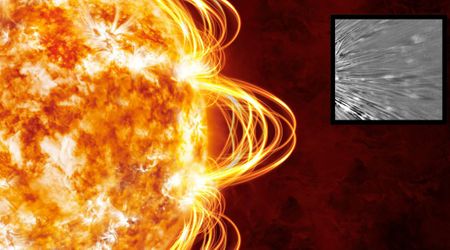SpaceX's 24 Starlink satellites launched to polar orbit from California

SpaceX’s Falcon 9 has launched 24 Starlink satellites to low-Earth orbit from Space Launch Complex 4 East (SLC-4E) at Vandenberg Space Force Base in California, per SpaceX. The mission, named Starlink 17-1, carried 24 broadband internet satellites into space at a 97-degree inclination, reported Spaceflight Now. The launch teams targeted liftoff on Tuesday, May 27, 2025, at 9:57 a.m. Pacific Daylight Time (12:57 p.m. Eastern Daylight Time; 1657 Coordinated Universal Time). SpaceX used a Falcon 9 booster with the tail number 1082 to launch the mission to low-Earth orbit, marking the booster’s 13th flight.

This booster previously flew NROL-145, USSF-62, OneWeb Launch 20, and nine other batches of Starlink satellites. Approximately eight minutes after liftoff, B1082 prepared and targeted for landing on the droneship ‘Of Course I Still Love You.' After a successful landing, the company can add it as the 132nd touchdown on this vessel and the 452nd booster landing to date. SpaceX had fewer launches of Starlink satellites into a polar orbit. From over 260 Starlink missions, the company has sent fewer than 10 Starlink satellites at a 97.6-degree inclination, per SpaceFlight Now.

It included four missions in 2022 and another one in 2023. Moreover, the first two Transporter rideshare missions that carried Starlink satellites into a polar orbit happened in 2021. Ten satellites flew on Transporter-1 in January 2021, and another three flew on Transporter-2 in June 2021, both at a 97.5-degree inclination. The missions that followed in the next years, 2022 and onward, were Starlink 3-1, Starlink 3-2, Starlink 3-3, Starlink 3-4, and Starlink 3-5.

Spaceflight Now (@SpaceflightNowVideo) did the live cast 30 minutes before the launch and five minutes before liftoff by SpaceX. Backup opportunities for the liftoff were available until 1:14 p.m. PT, with an additional launch window on Wednesday, May 28, beginning at 9:14 a.m. PT. The droneship stationed in the Pacific Ocean received the landing following the stage separation, per Vandenberg Space Force Base.
Watch Falcon 9 launch 24 @Starlink satellites to orbit from California https://t.co/4dRcTCk1uL
— SpaceX (@SpaceX) May 27, 2025
This launch followed a set of SpaceX Falcon 9 Starlink mission launches last weekend, where the company sent 23 Starlink satellites into low-Earth orbit. With an all-green from the National Weather Service, liftoff was achieved from the Cape Canaveral Space Force Station. According to the official SpaceX website, the liftoff was the Falcon 9's first-stage booster’s 24th flight; it had previously launched CRS-24, Eutelsat HOTBIRD 13F, OneWeb 1, SES-18, and SES-19, as well as 19 Starlink missions. Out of the 23 Starlink V2 Mini satellites, 13 were designed with Direct to Cell capabilities, per SpaceFlight Now.
During last weekend's launch, booster B1069 landed on the droneship "A Shortfall of Gravitas" in the Atlantic Ocean eight minutes after take off and stage separation. Moreover, around one hour into the flight, the 24 Starlink satellites were released from the rocket's payload adapter from the first stage in low Earth orbit (LEO), per Space.com. It takes a few days for each satellite to maneuver itself into specific orbit positions within the Starlink megaconstellation. The Starlink network of SpaceX has over 7,000 operational satellites, and it continues to increase.









